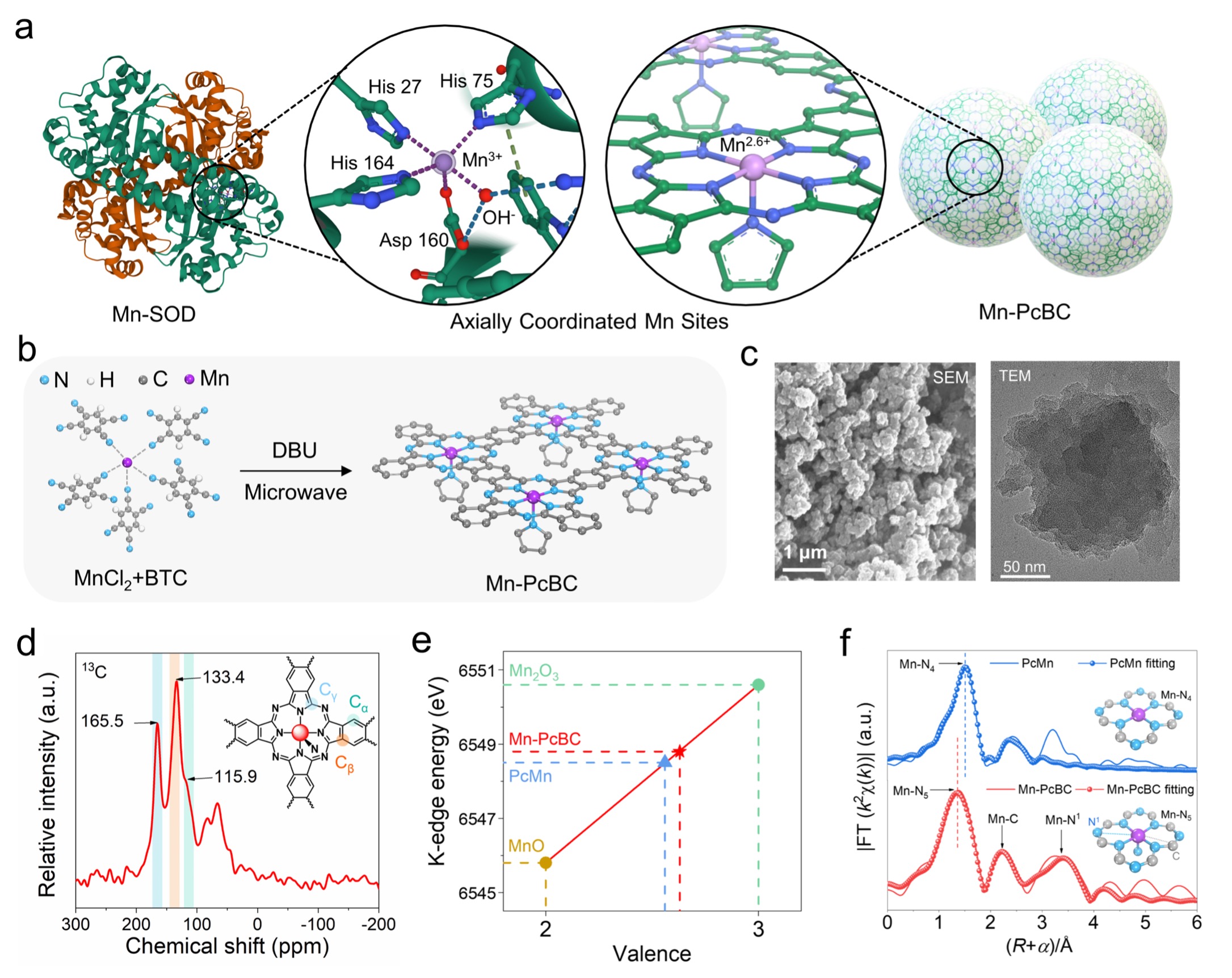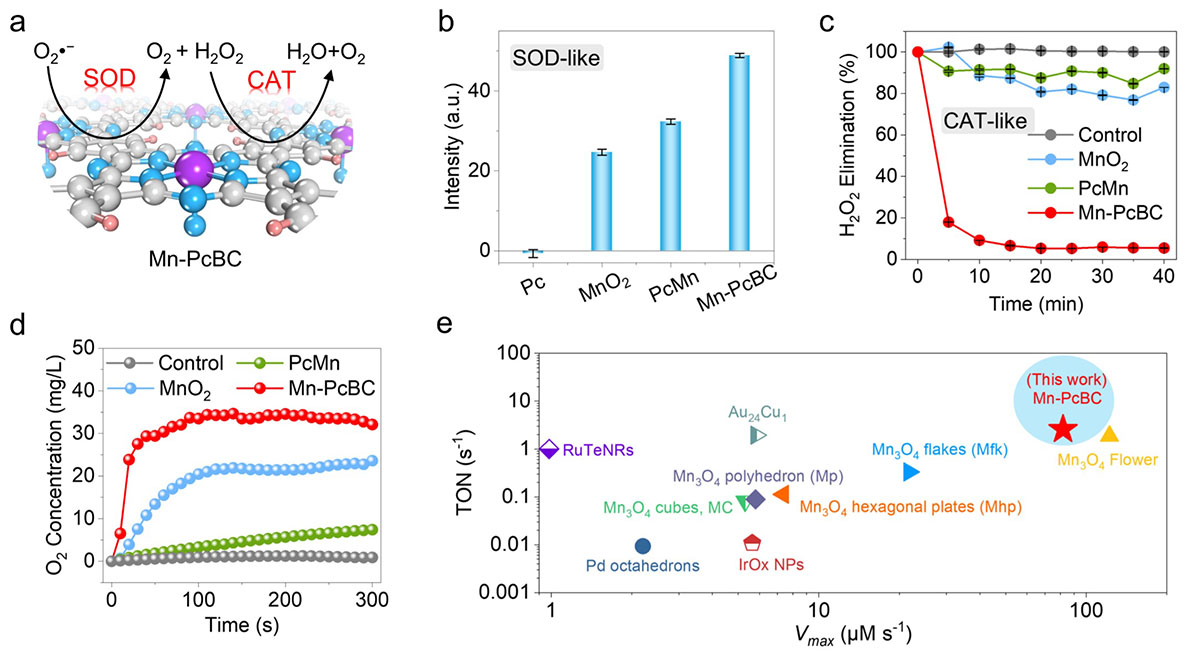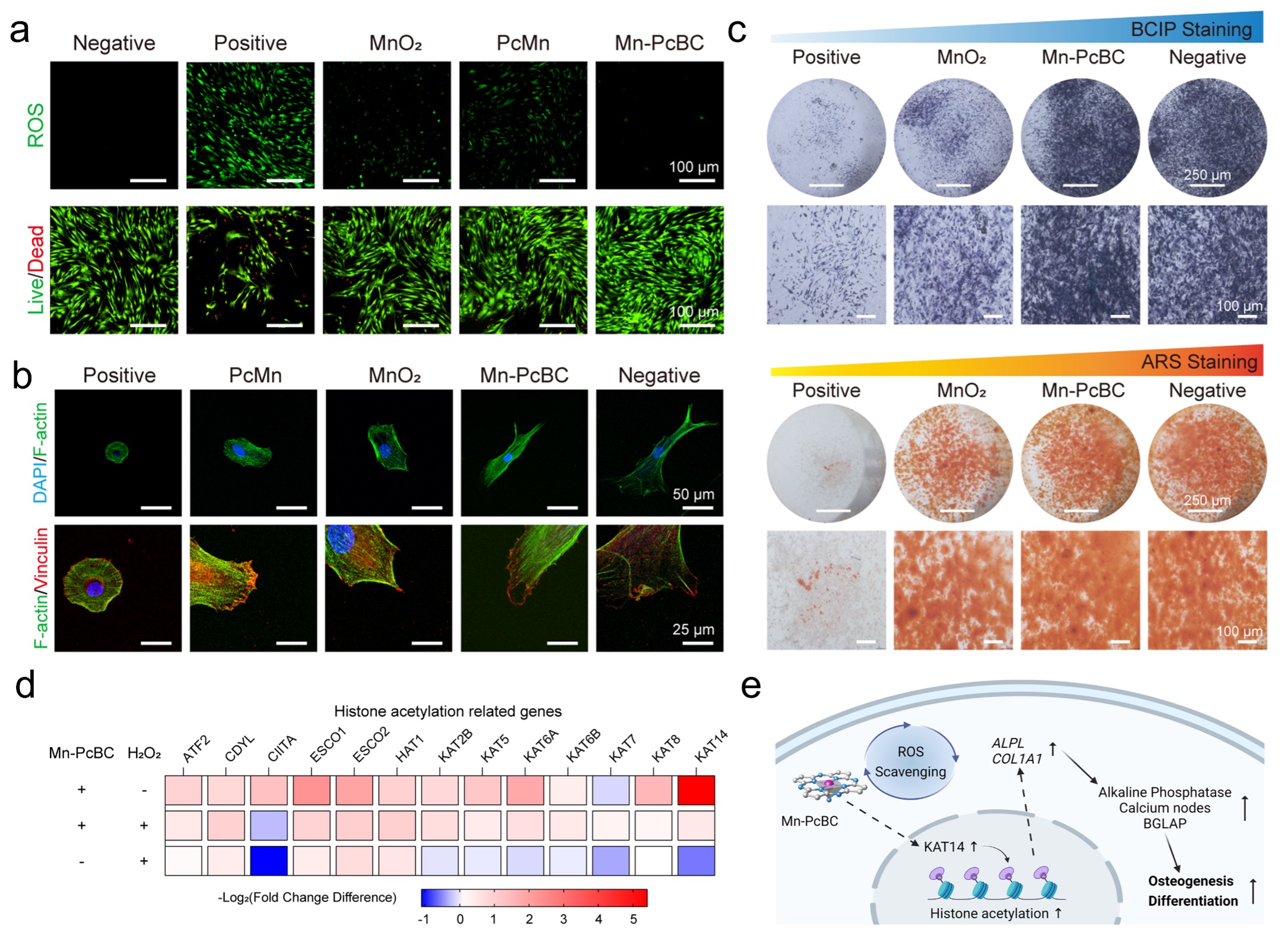| Apr 05, 2023 | |
Innovating efficient artificial antioxidases for stem cell therapy |
|
| (Nanowerk Spotlight) The rapid development of regenerative medicine based on stem cell transplantation offers promising treatment options for severe tissue injuries, such as cardiac function repair, nerve cell regeneration, and refractory bone defects. However, the abnormal increase of reactive oxygen species (ROS) in injured tissues can severely damage stem cell proliferation, limiting the clinical applications of stem cell transplantation. | |
| ROS are molecules that can cause oxidative stress, leading to cellular damage and dysfunction, while antioxidases are enzymes that counteract the harmful effects of ROS by scavenging and neutralizing them. | |
| Current methods for combating ROS involve using antioxidant molecules and endogenous antioxidant enzymes. However, these traditional antioxidants have limitations in clinical trials due to poor treatment efficiencies. Antioxidant enzymes such as superoxide dismutase (SOD) and catalase (CAT) have been studied for their high specificity and efficiency in scavenging ROS, but their intrinsic shortcomings limit their application potential. Consequently, there is an urgent need for artificial antioxidases with efficient ROS-scavenging activities to address the growing interest in anti-ROS materials. | |
| Inspired by the coordination structure of Mn-based antioxidase (Mn-SOD), Professor Chong Cheng and Professor Ling Ye from Sichuan University have designed a new manganese-coordinated polyphthalocyanine-based biocatalyst (Mn-PcBC) as an artificial antioxidase to improve stem cell transplantation outcomes. | |
 |
|
| Figure 1. The design and construction of Mn-PcBC. (Image courtesy of the researchers) | |
| This biocatalyst features axial Mn-N5 sites and 2D d-π-conjugated networks, which serve as an artificial antioxidase for rescuing stem cell fates. The researchers systematically explored the chemical structures, catalytic activities, and catalytic mechanisms of Mn-PcBC using both experimental studies and theoretical calculations. | |
 |
|
| Figure 2. The ROS scavenging performances of Mn-PcBC.(Image courtesy of the researchers) | |
| They present their findings in Angewandte Chemie International ("Manganese-Based Antioxidase-Inspired Biocatalysts with Axial Mn-N5 Sites and 2D d-π-Conjugated Networks for Rescuing Stem Cell Fate"). | |
| The researchers synthesized Mn-PcBC using a unique coordination structure inspired by Mn-based antioxidase. Density functional theory (DFT) calculations reveal that Mn-PcBC's excellent catalytic activities are attributed to its 2D d-π-conjugated network and the axial Mn-N5 coordination. | |
 |
|
| Figure 3. The stem cell protection and differentiation performances in high-level ROS microenvironments.(Image courtesy of the researchers) | |
| Furthermore, the study demonstrates that Mn-PcBC can effectively protect mesenchymal stem cells in high ROS-contained microenvironments, leading to improved survival rates, cytoskeleton organization, adhesion formation, and osteogenic differentiation. | |
| Cheng and Ye report that, due to the structural benefits of polyphthalocyanine-based 2D networks and axial coordination, Mn-PcBC exhibits superior, versatile, and robust ROS-scavenging capabilities, such as H2O2 and •O2???, by far outperforming previously reported Mn-based artificial antioxidases. | |
| They conclude that the Mn-PcBC biocatalyst offers an efficient, multifaceted, and robust artificial antioxidase for broad-spectrum ROS scavenging and has the potential to enhance stem cell-related therapies and address various ROS-mediated diseases. | |
 By
Michael
Berger
– Michael is author of three books by the Royal Society of Chemistry:
Nano-Society: Pushing the Boundaries of Technology,
Nanotechnology: The Future is Tiny, and
Nanoengineering: The Skills and Tools Making Technology Invisible
Copyright ©
Nanowerk LLC
By
Michael
Berger
– Michael is author of three books by the Royal Society of Chemistry:
Nano-Society: Pushing the Boundaries of Technology,
Nanotechnology: The Future is Tiny, and
Nanoengineering: The Skills and Tools Making Technology Invisible
Copyright ©
Nanowerk LLC
|
|
|
Become a Spotlight guest author! Join our large and growing group of guest contributors. Have you just published a scientific paper or have other exciting developments to share with the nanotechnology community? Here is how to publish on nanowerk.com. |
|
